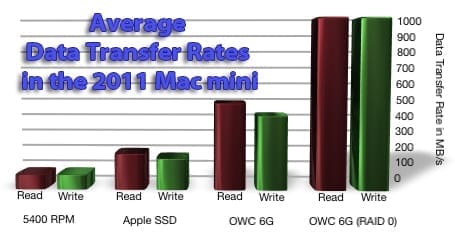 Our benchmarking has been completed on the latest round of Mac mini machines from Apple. We teased a bit with our post from last Friday exclaiming that the OWC 6G SSDs work with the new 2011 Mac mini.
Our benchmarking has been completed on the latest round of Mac mini machines from Apple. We teased a bit with our post from last Friday exclaiming that the OWC 6G SSDs work with the new 2011 Mac mini.
In our excitement on discovering the functionality of the drives, we posted screenshots of a few of our test results, but we wanted to put what that means for you into perspective.
The chart above shows the average read/write speeds as reported by QuickBench in four increasingly beneficial drive configurations in our 2.5GHz Intel Core i5 Mac mini (RAID 0 configuration results obtained from a 2.0GHz Intel Core i7 Mac mini Server as that is the only machine that comes factory stock with two available drive ports.)
So, how fast are they?
With the factory stock 5400RPM hard drive, which is what most people are used to computing with, the Mac mini goes pretty fast achieving read/write speeds around 86MB/s – consistently above the maximum rated 80MB/s of an external FireWire 800 connection. Plenty of speed for your average email / web-surfing / social media computer.
Now, Apple does offer their own 256GB SSD option (a $600 add-on which isn’t available on the 2.3GHz base model) which boosts the average speed to an impressive 210MB/s read and 182MB/s write. Pretty good for speeding up a lot of data intensive activities like importing music and video.
But if you’re into audio editing, video editing, or doing anything else that reads and writes large amounts (or several small amounts) of data – there’s just no substitute for a SATA Revision 3.0 capable SSD such as the OWC Mercury EXTREME 6G SSD. The speeds are well over twice as fast boasting 506MB/s read speeds and 432MB/s write speeds from a single drive!
Then we tested two OWC Mercury EXTREME 6G SSD in a RAID 0 configuration (on the server model of Mac mini – again we’re looking into how to get a second hard drive into the consumer model, but that will be another blog post down the road after we figure it all out) we got Thunderbolt-saturating speeds averaging 995MB/s and 994MB/s for read and write speeds respectively.
I’m not a power user. I don’t deal with data larger than my pictures and music.
What’s in it for me?
Keep in mind the above chart shows only the averages including large data transfers such as the files you’re working with versus the small data reads and writes that the OS routinely makes. Most, but not all, of these small data transactions are between the OS and the RAM installed in your computer. But when you’re out of RAM space, or for files such as cookies and caches, the hard drive is where that data is stored. The more memory and the faster the hard drive, the more “zip” your computer has overall or the quicker using your computer “feels.”
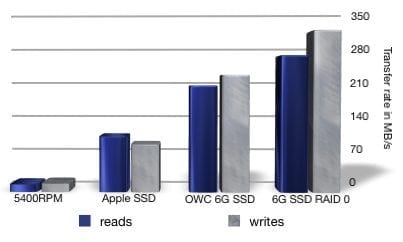
This can actually be quantified by examining the 4kB-1MB random read/write speeds of each setup.
The platter-based 5400RPM stock drive gives an almost abysmal 14-16MB per second transfer rate. This is why more memory added to the system makes the whole computer work better, multi-task more efficiently and ultimately feel faster.
System memory or RAM uses the same type of flash components as today’s Solid State Drives. They’re designed to handle all those small transactions quickly and efficiently. Until recently, the sheer cost of those flash components necessitated using a different type of media for long-term data storage. Not anymore.
With the 2011 Mac mini models, we’ve found that Apple has delivered a rock-solid SATA Revision 3.0 (6Gb/s) system bus, but their optional SSD drive is a SATA Revision 2.0 drive capable of a maximum transfer rate up to 3Gb/s. Just by the choice of drive, the overall throughput is throttled.
The small Random Data Transfers rates of Apple’s SSD clock in between 91-107MB/s and certainly adds a lot of that zip factor over the stock 5400RPM drive. However, the SSD itself, while much faster than the stock drive, is still slower than the system bus.
Now, look what happens when we introduce a drive that is capable of the full throughput the machine itself can deliver. The OWC Mercury Extreme Pro 6G SSD achieves 204-224MB/s…well over 10 times faster than the stock drive and over twice the speed of Apple’s current SSD offering. Talk about adding performance to Apple’s entry-level computer!
Just for fun, we then installed a second Mercury Extreme Pro 6G SSD and used Disk Utility to combine both into a RAID 0 Striped volume. Using both channels simultaneously, we recorded 262-310MB/s random transfer rates. Wow!
So, why am I still reading this?
Beats me, the only thing left to do is check out the OWC Mercury 6G SSDs and get yours today!


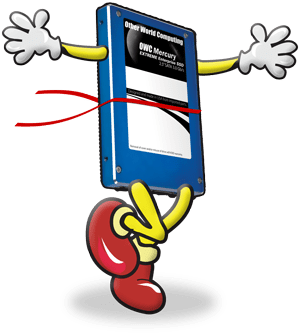
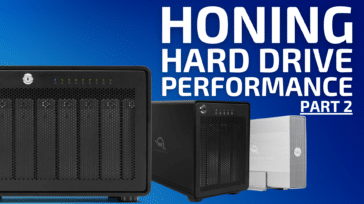
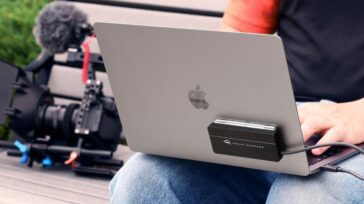
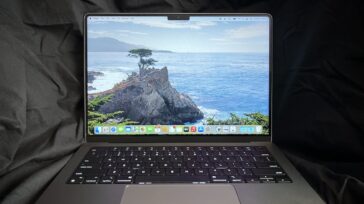
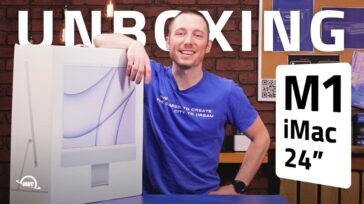


There may be noticeably a bundle to find out about this. I assume you made certain good points in options also.
I am in the market for a new low end Mini and want to add an ssd as a second drive. Do you hace a kit and instructions on how to do it? You mentioned at the end of the article that you dropped a second ssd into your test setup to try out the raid option.
Thaks!
We installed the second drive in the base system for testing by adding the drive cable and mounting hardware from a mini server. We are working on offering an aftermarket solution for adding a second drive to the base Mac mini, however we currently have no ETA on when that would be available.
Update – we now have the kit available! http://blog.macsales.com/13774-owc-introduces-diy-kit-for-adding-second-drive-to-2011-mac-mini
I just slapped one of the Electra 6G 240GB drives in my computer a few days ago and immediately did a Black Magic Design speed test to confirm the types of video media I can work with. At that time, the drive was hitting a steady 207MB/s read, 210MB/s write (very minimal speed fluctuation) which is probably the maximum I should expect for incompressible, large data (1080P24 video files with audio) on my 3G SATA bus. But, a few days later, with no changes to the drive and no data at all stored on the drive, the speed has declined significantly to about 150MB up and down. The test starts out near 200, but then rapidly declines to 140-150 read/write. Is the controller throttling my performance?
Mac Pro 5,1 3.33GHz 6-core, 24GB ram, 10.7.3 with SSD mounted in upper optical bay.
It isn’t anything with the drive or your connections – BlackMagic Design made an update to the test itself and it now only uses fully-compressed data. At this point, it’s good for a worst-case scenario for speeds on an SSD, but isn’t indicative of real-world usage and speeds.
That’s not what I’m concerned about. The deal is that Monday I tested the drive (5GB stress) and saw consistent 215 read/write (about) and then Thursday to present I see a 200 spike then quick recession to 150. The software has not been updated. The drive is considerably slower after 4 days of non-use. I deal with incompressible data in my HD video workflow so I’m paying for performance.
I’ve noticed a good 10 degree celsius increase in the CPU temperature of my 2011 Mini since the install of the OWC SSD. Why is that?
We noticed no significant differences in temperature in any of our installs here, which means it’s probably an individual occurrence. It’s entirely possible that one of the heat vent cowlings was accidentally either misaligned or blocked during the disassembly/reassembly process.
A simple way to double-check both the air vents and the drive itself would be to swap in the original drive and see if the temperature returns to normal. If it does, then see if reinstalling the SDD brings the heat difference back.
If there is no difference when you swap the original drive back in, then you may need to take a closer look at your system.
If the issue goes away with the original, but comes back with the SSD, then you will want to contact our Technical Support.
OWC:
What are the best system setting for the 6G sad drives? I have a 240gb drive installed and was curious about sleep setting etc. I have also read about people doing terminal tweaks to optimize the drive life and functionality. Is it a bunch of smoke and mirrors?
Regards,
To get the results listed in the article, we merely replaced the stock drive(s) in the mini with our Mercury EXTRREME 6G SSDs; no changes to system settings or any special adjustments were made. For those who want to “tweak” their systems for maximum performance, we generally recommend checking out the Mac Performance Guide by our friend, Lloyd Chambers.
When can we expect a OWC ThunderBolt external RAID array or single drive enclosure, such as the one you have for USB 3.0 now?
Thanks, Michael!
We currently are planning to offer our own brand name Thunderbolt equipped storage solutions in early 2012. Why the extended time frame? Just like how we took our time in developing our industry leading SSDs, we don’t rush into product areas until there is more evolution of the emerging technology…so we can offer the highest levels of performance, quality, and reliability.
In the interim, we will be offering various third party (non-OWC) first generation Thunderbolt products for those customers that can’t wait for the improvements we will ultimately provide.
We applaud Apple for partnering with other technology providers, getting consumers excited about this latest data interface, and creating demand for Thunderbolt enabled products. The industry is in the very early stages of Thunderbolt developments and we’re excited to have the opportunity to be developing solutions with the next generation of data transfer performance.
What stripe size did you use on the raid 0?
As I recall, we used the default settings, which I believe is either 32k or 64k – probably the former.
Hello guys,
do you have any estimate on the 4kB-1MB random read/write speeds for the standard 5400 drive in a Firewire800 enclosure?
Since the stock drive only gets a 14-16MB per second transfer rate in this case, is it safe to assume that the speeds for the same drive over Firewire800 would be in the same ballpark? (Assuming that this is mostly about drive mechanics, rather than connection capabilities).
Basically, I’m considering the pros and cons of waiting for a two-drive kit from you guys, or to just replace the standard drive with a SSD and connecting the HDD over Firewire for more “static” data storage.
Actually we hadn’t had it – so we tested and there isn’t much difference – all the iterations were within 1-2MB of each other whether installed internally or in a FW800 enclosure. You are correct in your assessment that it has more to do with drive mechanics than the connection capabilities as connecting via eSATA or USB yielded the same results.
Thank you for a thorough reply!
One order of a SSD and a Firewire enclosure will be coming your way soon.
What is the problem with fitting two owc ssd in the consumer mac mini 2011? Will it be possible to install two OWC Electra 6g in raid 0 on that (in case it will fit), and what would make the difference with the Extreme 6g version?
Hi Rune….difference is we don’t recommend use of Electra in RAID 0 mode…only RAID 1 and SPAN. Really, no problem fitting two of our SSDs in a new mac mini….just need the Apple drive connecting cable. Stay tuned here to the blog to see if and when we introduce a drive install kit bundle, etc.
Cool, looking forward to it!
Any news on a dual drive kit?
Are you working on it or have you given up on this?
Our product development team is still working on the kit for adding a second hard drive to the Mac mini mid 2011 machines. The solution seems to be making progress, but is not ready yet. When it is available we’ll be announcing it here on the OWC Blog with its own post – so stay tuned.
The kit is here! http://blog.macsales.com/13774-owc-introduces-diy-kit-for-adding-second-drive-to-2011-mac-mini
Michael,
On the OWC Mercury 6G SSD page below there is a bullet item: “Chip Based Data Encryption: 256-bit & 128-bit AES-compliant”. What does this mean for the consumer?
For example, I am running OS X Lion on my new 2011 MacBook Pro 17. I activated FileVault (which protects me from bad guys if I lose my laptop). Unless the bad guys have my admin password, they can’t see anything on the drive — it is encrypted.
So.. big question.. Since FileVault takes a small toll on the system performance (3% or so?), will the “Chip Based Data Encryption” of the Mercury 6G SSD make FileVault unnecessary? or maybe work better/faster?
Thanks
http://eshop.macsales.com/shop/SSD/OWC/Mercury_6G/
They’re two separate data encryption measures.
FileVault protects your data by requiring a password to protect your data. Yes, any additional processes like FileVault will effect performance, but that is a trade-off you make for that type of protection.
The Chip-based data encryption is different. It protects your data on the chip level. Meaning if the chips themselves are removed from the drive, they can’t be installed onto another SSD board and be read for information.
At this time, one is not a replacement for the other.
I wouldn’t want to take a second performance hit for on-chip data encryption.
Can the chip based encryption be turned off? Perhaps it is a teeny tiny performance hit.
Strange feature. Seems like a measure to protect chip supply?
The chip encryption is built into the drive; there isn’t a way to turn it off.
Let me ask a general question about SSDs please. Should one use utilities like Diskwarrior or Drive Genius on them as one would on a HD?
thanks,
paul
Those programs deal more with the directory structure on the the drive – which is the same on a HDD as on a SSD. So both would work just fine.
Okay, Then I’m set. I’ve just ordered a 120g Mercury Electra.
Very interesting benchmarks. I would love to see similar benchmarks running on a recent Mac Pro. The Mac Pro is still shipping with SATA ports limited to 3Gbps. That would not be enough to run the OWC Mercury Extreme Pro 6G SSD at top speed when transferring big files. But it should still be a tremendous boost. Besides, when it comes to transferring files of 4kB-1MB, 3Gbps would no longer be the limitation (or am I misunderstanding that?)
Is true the new mini”s run hot compared to the 2010 model”s ?
Don’t have any official metrics on it, but they didn’t seem to run any hotter while gathering the benchmarks.
I installed a 120GB 6G SSD (non-EXTREME) in my new mini 2.7 i7 in the upper bay. I was able to obtain the cable and screws needed to perform the install from Apple (yay job!). Just a side note, rubber grommets were missing from the drive carrier, but I snagged some from a dismantled iBook.
The SSD makes such a huge difference in the performance of this machine! The system boots up in 10 seconds, and the Thunderbolt port does act as a MiniDisplay port, so dual monitor support works just fine.
I’m just glad they didn’t do the firmware tricks they pulled in the 2011 iMacs. I left the restore partition on the stock drive (750gb 7200rpm from Apple, it’s a Western Digital Black) until I get around to making a restore USB flash drive.
Hi there guys.
I’m just curious – how do the boot times compare between a mechanical HDD and an SSD when switching the machine on?
There are additional benchmarks with memory & SSD linked to in the article. Included is the boot time test on the Mac mini server:
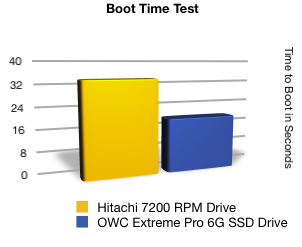
@OWC Team
Guys i Have a question:
I read in some blog that in the mac mini 2011 with AMD graphics is impossible to installing a second hard drive because there is no space due to the graphic card presence, but Apple in BTO options offer the possibility to configure the mini with two hard drive.
So i would like to know if there is the possibility to install a second hard drive into a mini with AMD graphics.
Thanks for the answer, regards
Filippo
We’ve gotten one of each of the base models on the 2011 Mac minis and all three have the same hard drive bay space regardless of which graphics the mini came with.
That’s great for the Mini, but have you done the same tests on a new MacBook Air? I was thinking of buying Apple’s 13″ MBA with an i7 processor and their 256 SSD. But after what I just read on the Mini I’m wondering if the Apple SSD for MBA is throttled to Revision 2 also and is short-changing the system bus? If so, should I order the 128 SSD and replace it with OWC 256 SSD?
Yes, system profiler shows the port on the 2011 MacBook Air is 6Gb/s capable. However, the Aura Pro Express uses a SandForce SF1200 Series processor which is rated for SATA Revision 2.0 speeds.
You replied “… the 2011 MacBook Air is 6Gb/s capable. However, the Aura Pro Express uses a SandForce SF1200 Series processor which is rated for SATA Revision 2.0 speeds.” Do you know if OWC is planning to upgrade its MBA compatible flash drives to be 6GB/s capable… soon? If not, then I might as well order the MBA with the 256 already in. Besides no one has an enclosure for removed Apple 128 flash drives to make it into an external drive (especially a Thunderbolt connectable one).
A 6Gb/s capable Aura Pro Express is not outside the realm of possibility, but does not exist at this time.
That’s some very good speeds in a Mac Mini. I got myself a 6G Extreme for my MacBook Pro from you guys, but I was wondering, what tool do you use to measure the speeds that are posted in this article?
Cheers.
All speeds were reported by QuickBench.
Do you know which of the two drives had the OS on it? From looking at the 2010 video, the first drive looks pretty easy to take out. I am hoping that if I am just replacing one of the stock drives with the OWC SSD, that it can be that one… and if the other has the OS on it, can it be cloned to the SSD post install?
The OS is on the “lower” drive (the one that is easier to get to through the bottom).
The 2011 iMac’s have been out for a while now and even the least expensive 21″ machine has a 6G SATA port. Swapping out the very slow hard disk for one of your 6G SSD’s would be an awesome upgrade. Are you looking in to offering SSD upgrades for the 2011 iMacs or have you given up on that because of the connection and firmware issues?
Hi Mark…still working on these…give us some time..and if Apple would stop making announcements, we could get some work done around here ;-)
Grant,
I am glad to here that OWC is still working on trying to upgrade the disks in the 2011 iMacs. That would be a great upgrade from a HD to a 6G SSD!
One other question if I might. When OWC updated the firmware on their 3G SSD the updater was Windows only. Has a Mac updater become available yet?
No Mac version yet, but it is still in development and we’re hoping to have it ready sooner rather than later.
Well thats great news! I was figuring any day now we’d get the post about no 2011 iMac turnkey program :( At least your still looking into things!
On the RAID0 server install, does it have TRIM support on that volume? Did Lion installer create a Recovery partition?
Thanks.
JN
The OWC 6G SSDs are SandForce based, so OS X doesn’t turn on TRIM for the volume and we don’t suggest trying to add 3rd party TRIM support either. For further information, see our blog post on “To TRIM or not to TRIM (OWC has the answer)”
The Lion installer does create a recovery partition, although for ease of setup we did clone the drive rather than setup from scratch.
Can I put one of these in the i5 mid-range Mac mini – swap out the stock 5400 hard drive for one of these drives fairly easily?
Replacing the stock 5400RPM drive for an OWC 6G SSD is fairly straightforward. We should have our installation video available by next week to show you how.
Great! Looking forward to the video to guide me through the process. Thanks.
Would the presence of two 6G SATA connectors in the Mini server model make it possible to attach an eSATA cable to one of them and hook it up to my OWC Guardian Maximus?
There have been several successful independent mods like this with the 2010 model which route a cable through the bottom door (giving your Mac mini a “tail”) but there really isn’t the room in the housing itself to elegantly add an eSATA port. Also doing a modification like this would most likely void your warranty. But from the strictly technical aspect, it could be done.
And, no OWC won’t be offering a turnkey service on the 2011 Mac mini.
> And, no OWC won’t be offering a turnkey service on the 2011 Mac mini.
Not for the particular eSATA connection in question — or not at all?
Please clarify.
— Satisfied customer of 2010 Mac mini OWC turnkey service
Yeah – great.
When we will be able to buy the equivalent of and Apple #922-9560 cable from you guys so that we can install either an Extreme Pro 6G SSD along with a hard drive or two SSD’s in a non-server Mini (the one with the separate graphics processor)??
Enquiring minds want to know!
I answered that in the blog post…” we’re looking into how to get a second hard drive into the consumer model, but that will be another blog post down the road after we figure it all out”
I know; just being a nudge. Squeaky wheel and all that…
I know the development team is working hard on that one. We’re as anxious as everyone else to have that upgrade too.
Can a video card be added to the Server version of the Mini?
CJ
No, the graphics are incorporated into the motherboard and are not upgradeable.
Presumably in the not so distant future, OWC will offer an external box that can hold an upgraded video card that will be attached via Thunderbolt?
However it may be possible to add an external Thunderbolt graphics card eventually.
Who knows what the future may bring. Thunderbolt is still in its infancy.